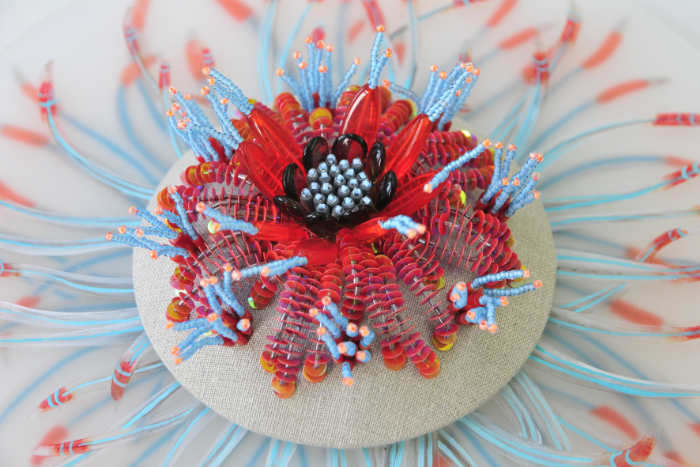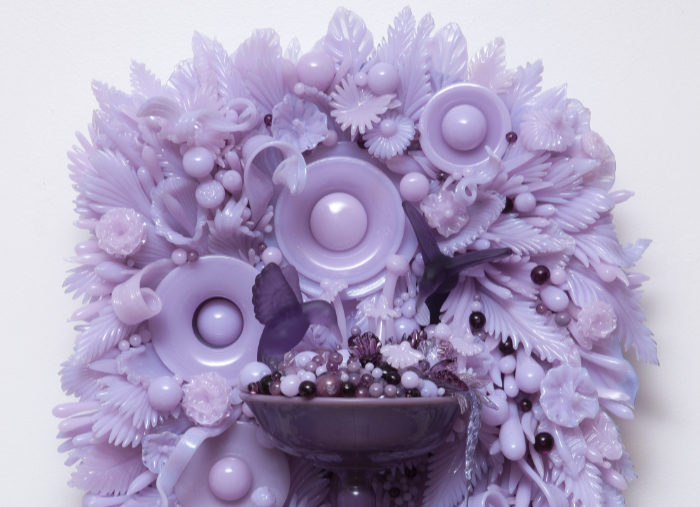
Sculpting history
Glass artist Amber Cowan captures the past in her detailed dioramas in vintage colours that are inspired by, and incorporate, glass from now closed US factories. Linda Banks finds out more.
What led you to start working with glass?
I have had a fascination with glass since I was a child. I remember buying my mother glass presents and jewellery and have always been drawn to little glass animals.
What glass techniques have you used and which do you prefer?
I started out learning traditional hot shop glassblowing as an art student at Salisbury University in the US. For my work now I am primarily a flameworker. I still occasionally blow glass in the hot shop, but most of my work time is spent flameworking. I also do a bit of fusing, which is incorporated in my work. I also use coldworking when necessary, but it is not my favourite technique.
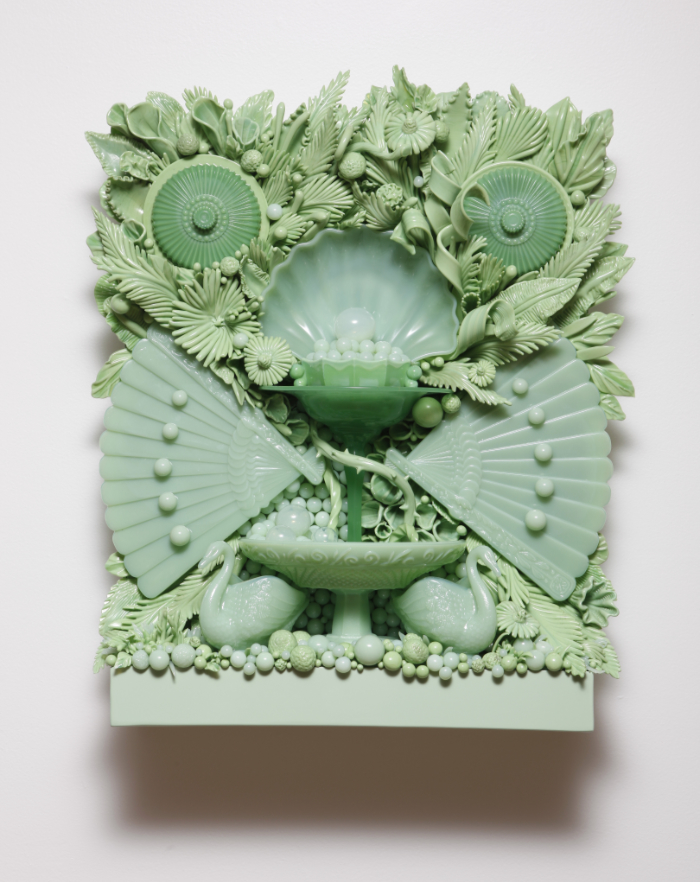
You use a lot of old and end-of-line pressed glass in your work. How did this come about and why is this important to you?
I started working with this kind of glass in graduate school at Tyler School of Art. It was initially a financial decision because I found a barrel of this type of old cullet available and free in storage at the school. I then went down the rabbit hole as I decided to find out where this glass came from and dived into the history of the material. This discovery led to my next 10-plus years of work and a fascination with the history of this material. There is a rich history of glassmaking in the US and a lot of this is being forgotten as the factories have closed. I think it is important to remember this history, the patterns of the moulds, and the colours that were created. My work gives this kind of glass a new story and a new place in history.
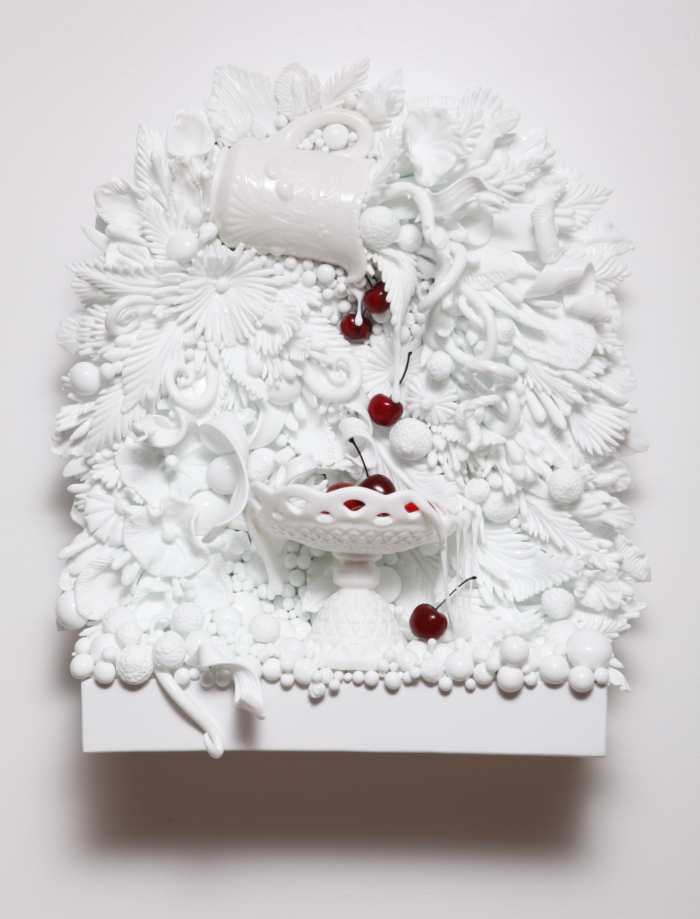
What is your creative approach? Do you draw your ideas out or dive straight in with the materials?
I usually start with the raw materials and colours that I find in the cullet. Then I start to search for what original pieces were created in those colours. I do deep dives on the internet, sift through flea markets and antique stores, and get a lot of donations from strangers and friends. Most of my process is labour-intensive flameworking, making a lot of organic shapes, from flowers to feathers, pearls and leaves. Once I have the bulk of the flameworked material created and the special elements picked out, I start arranging the composition. It is almost like composing a flower arrangement.

What message(s) do you want to convey through your art?
I am inspired by the vintage colours that I work with and the objects that were originally produced with them. More often my diorama-style pieces aim to animate the glass, whether that is birds or butterflies hovering over the work, an animal or figurine animating the piece, or the dripping of a fountain, where the glass is melting out of the piece. I aspire to tell animated stories with the work.
I also take elements from my travels and personal life into the narratives and imagine them into surreal compositions.
What is your favourite tool or piece of equipment and why?
I could not make my work without my bonsai shears. Almost all of the flameworked pieces, especially the feathers which I utilise a lot, are created by cutting the hot glass with bonsai shears.
Do you have a favourite piece you have made? Why is it your favourite?
I really love the piece ‘Bridesmaid’s Search for the Desert Rose’. I feel that my ideas and my technical abilities really came together with this piece, capturing my life at that moment.

Where do you show and sell your work?
I mainly sell my work through Heller Gallery in New York. I also have some work at Momentum Gallery in Asheville, North Carolina, and Habatat Gallery in Michigan. My work is in many public museum collections throughout the US.
What advice would you give to someone starting out on a career in glass?
The harder you work the luckier you get. Being successful in art is not necessarily about ‘talent’; it is about your dedication, work ethic and commitment to your practice.
Do you have a career highlight?
In 2021 I received a United States Artists Fellowship in Crafts. My other fellows in the category were truly phenomenal artists and I was very proud to be a part of that group and to receive that honour.
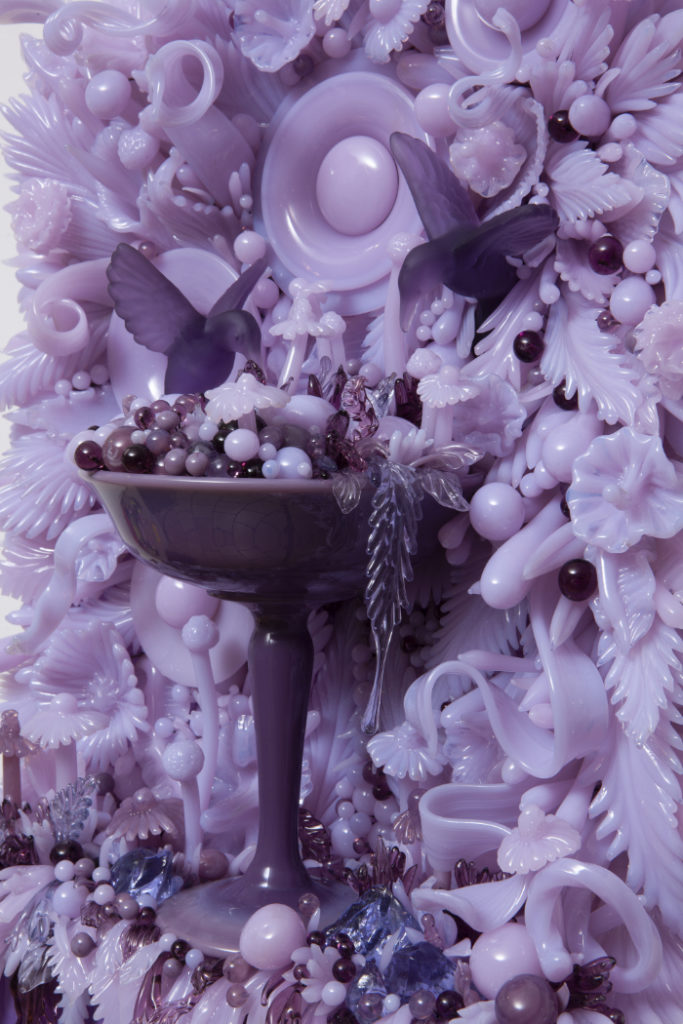
Where is your glass practice heading next?
I am hoping that my work will keep trending towards crossing over into the art world in general – not just the glass or craft worlds. I am very much a glass artist, and my work is about the history of the material, but it is nice to be appreciated for the work regardless of the material.
Is the global energy crisis affecting your practice?
Not exactly. I have obviously seen an increase in the prices of some of my supplies, but my energy consumption in creating my work is pretty low.
And finally…
I will have a show opening in April 2023 at The Museum of American Glass at Wheaton Arts in New Jersey. I am also teaching a torch and flameworking course at North Lands Creative in Scotland in August 2023.
About the artist
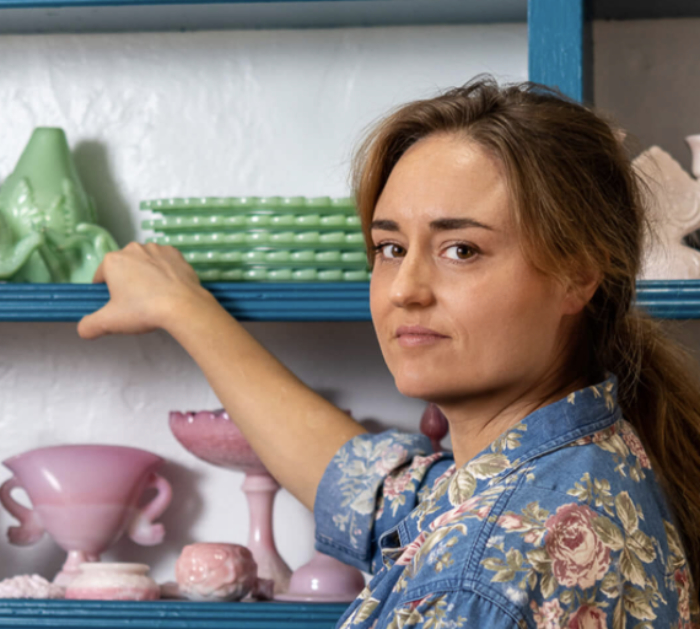
Amber Cowan’s sculptural glasswork is based around the use of recycled, upcycled, and second-life American pressed glass. She uses the process of flameworking, hot-sculpting and glassblowing to create large-scale sculptures that overwhelm the viewer with ornate abstraction and viral accrual. With an instinctive nature towards horror vacui, her pieces reference memory, domesticity and the loss of an industry through the re-use of common items from the aesthetic dustbin of American design.
Her recent diorama-style pieces tell stories of self-discovery, escapism and the power of the feminine utilising figurines and animals found in collected antique glass pieces. These figurines become recurring symbols in the evolving narrative and simultaneously pay homage to the history of US glassmaking.
Find out more via her website: www.ambercowan.com
All photos by Matthew Hollerbush.
Main image: Detail of the top section of Amber Cowan’s ‘Hummingbirds Feast on Helio and Lavender’ (2021)
